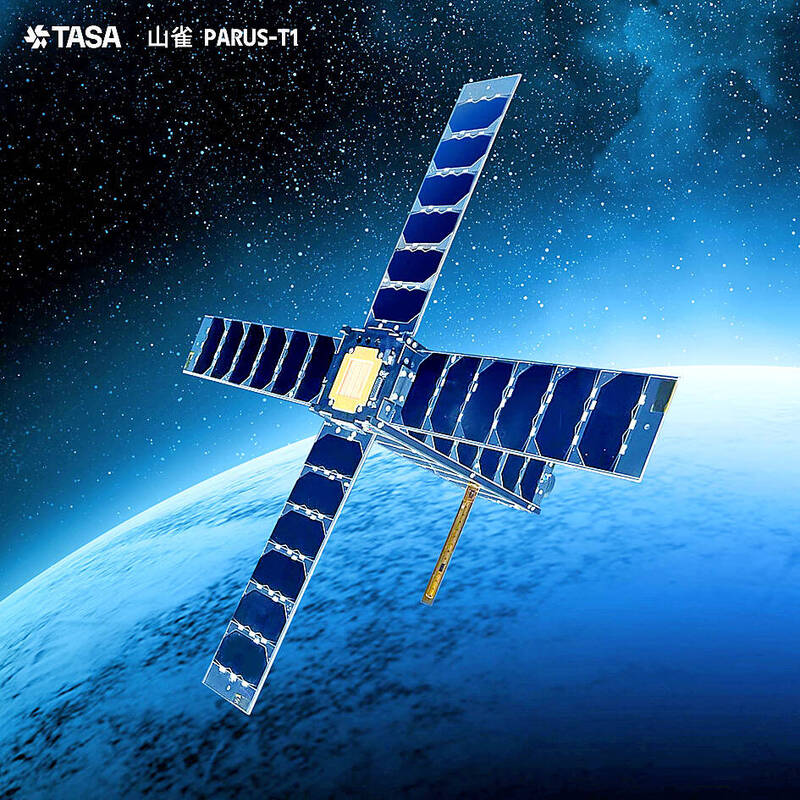《TAIPEI TIMES》Domestic satellite PARUS-T1 launched in California

The domestically developed PARUS-T1 satellite is pictured in an undated photograph. Photo courtesy of Taiwan Space Agency
PROJECT: The TASA and the Ministry of Environment yesterday unveiled a program to monitor air pollution over Taiwan, China and Southeast Asian nations
By Jonathan Chin / Staff writer, with CNA
Taiwan’s domestically developed PARUS-T1 satellite was launched into space yesterday on SpaceX’s Transporter-12 rocket from the US Vandenberg Space Force Base in California to begin its 12-month technological mission.
The rideshare mission was declared a success at 11:09am (7:05pm Pacific Standard Time on Tuesday), the Taiwan Space Agency (TASA) said.
The PARUS-T1 is a domestically designed, manufactured and integrated CubeSat-class 3U satellite launched to test the maturity of Taiwanese satellites, the agency said.
It carried an experimental payload of telecommunications and systems to automatically identify ships.
The 3U-sized T1, T1A and T2 3U satellites and the 6U-sized T3 and T4 satellites share a common family of platforms developed under TASA’s PARUS program, it said.
Named after Sittiparus castaneoventris, a species of small birds endemic to Taiwan, the PARUS program’s aim is to develop compact and innovative satellite systems for the nation’s use, TASA said.
The SpaceX rocket deployed PARUS-T1 at an altitude of 515km in low Earth orbit 57 minutes after the launch, and the satellite deployed its solar panels and antenna 30 minutes after it entered orbit, it said.
PARUS-T1A, the PARUS T-1’s ill-lucked sibling, was lost in a failed launch of Space One’s KAIROS vehicle in Japan last month, TASA said.
Separately, the TASA and the Ministry of Environment yesterday unveiled a program to produce a constellation of air quality observation satellites to monitor air pollution over Taiwan, China and Southeast Asian nations.
The constellation would consist of four multispectral and hyperspectral device-equipped satellites to measure particulate matter smaller than 2.5 micrometers (PM2.5), carbon dioxide and methane concentrations, officials told a news conference in Taipei.
The NT$6.1 billion (US$184.49 million) research and development program — which is expected to put its first satellite in orbit in three years — is to be implemented from next year to 2031, the officials said.
In addition, the ministry is conducting a program to monitor air pollution over Kaohsiung and Pingtung County in collaboration with NASA and researchers from Taiwan and the US, they said.
The 3D air pollution monitoring program makes use of readings from ground-based stations, drones, aircraft and satellites to analyze the distribution of pollutants and improve predictive modeling, they said.
The ministry is also applying Internet of Things and generative artificial intelligence technologies to locate air pollution sources, they added.
新聞來源:TAIPEI TIMES
















